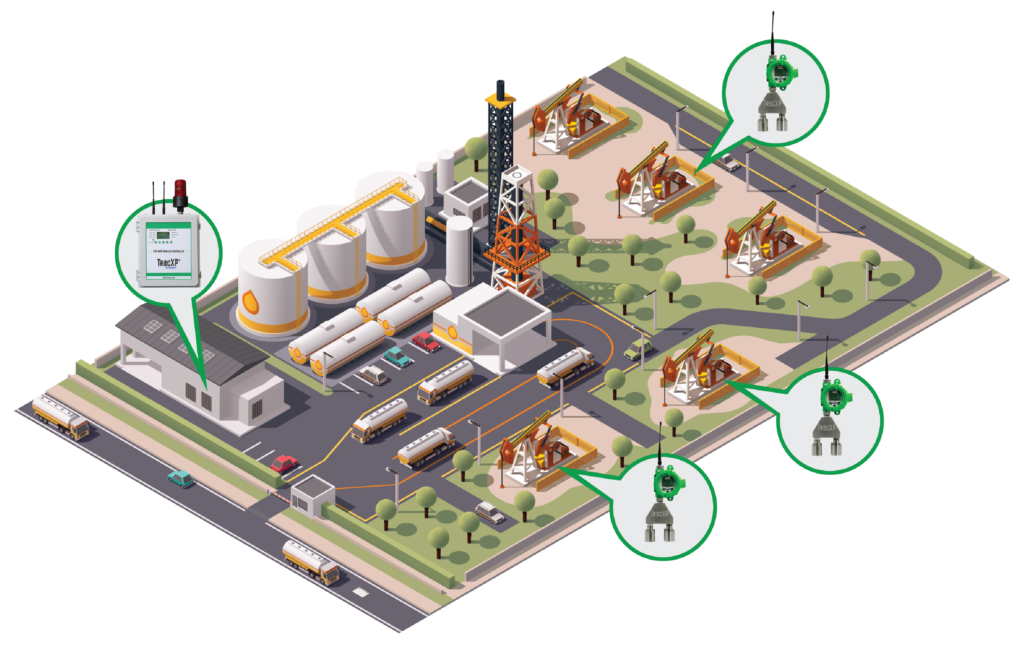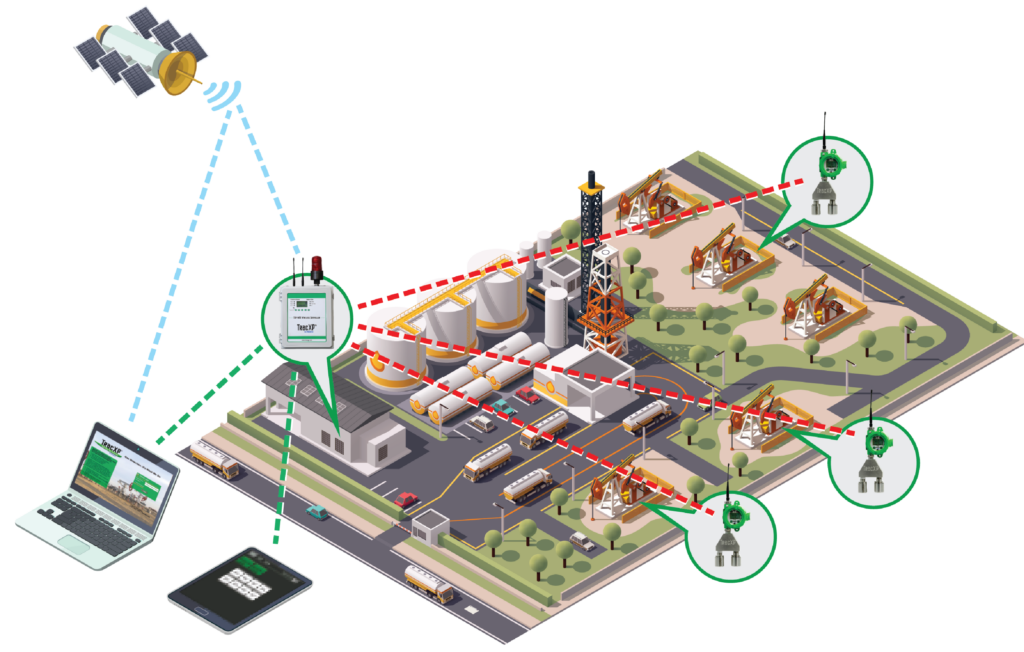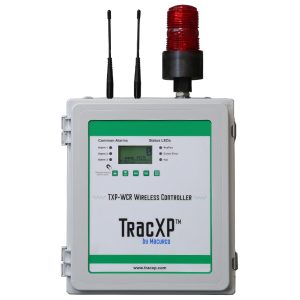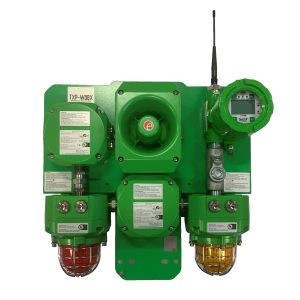
Wireless gas detection systems are used extensively in Oil & Gas applications, particularly upstream applications such as
drilling, flowback, and fracking operations. Wireless monitoring is also a great alternative for tank batteries and production
pads. These can also provide perimeter monitoring in Mid-Stream and Down-Stream facilities as well as temporary
monitoring during unit turnarounds.
Common Wireless Applications

Pipeline and Compression

Refining

Oil and Gas

Drilling and Production

Wastewater
Why Utilize a Wireless Application System?
Safety
Critical safety monitoring is paramount in industrial settings to protect personnel, facilities, the environment, and surrounding areas and populations.
System Flexibility
As processes and hazards in the industrial workplace are ever-evolving, wireless gas detection provides flexibility and scalability that hard-wired systems cannot.
Economics
Wireless gas detection systems can greatly reduce engineering time and costs. With minimal labor and materials required for typical wireless setups, installation costs are also greatly reduced.
Gases Found
Typical toxic and combustible gases that can be monitored with TracXP wireless gas detection systems include:
• Ammonia • Carbon Dioxide • Carbon Monoxide • Chlorine • Chlorine Dioxide • Hydrogen • Hydrogen Chloride
• Hydrogen Cyanide • Hydrogen Sulfide • Mercaptan • Nitric Oxide • Nitrogen Dioxide • Oxygen (deficiency and/or
enrichment) • Ozone • Phosphine • Sulfur Dioxide As well as a wide variety of hydrocarbons including: Propane
• Methane • Butane • Ethanol • Acetylene • Hydrogen Fluoride
Connectivity or Integration
There are many forms of wireless communication used within the TracXP product family.

900 MHz
900 MHz is a robust, license free (North America) radio band used for local communications and transmits up to two to three miles line-of-sight (LOS). This is how the interaction occurs between the Wireless Transmitter Assembly (TXP-WTA), the Wireless Control Receiver (TXP-WCR) and the Wireless Alarm Relay (TXP-WAR).
Wi-Fi
Wi-Fi is a family of wireless network protocols commonly used for local area networking of devices and internet access. This is an add-on option for the TXP-WCR, and provides real-time notification of site-specific alarm and trouble conditions
Satellite
Satellite communications utilize high frequency radio waves to enable data transmission in remote locations. Our Remote Monitoring Solution (TXP-RMS) delivers real-time field and operational intelligence for any wireless or wired gas detection system.






